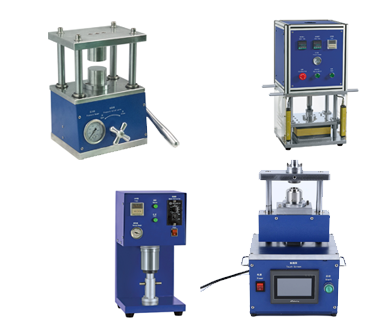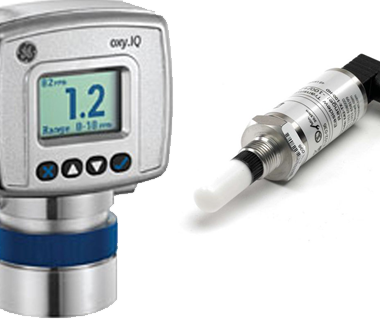No products in the cart.
Biological Safety Manual – Chapter 18: NIH Oversight of Research Involving Recombinant Biosafety Issues
Title
Biological Safety Manual – Chapter 18: NIH Oversight of Research Involving Recombinant Biosafety Issues
Introduction
The NIH locus for oversight of recombinant DNA research is the OBA, which is located within the Office of Science Policy, in the Office of the Director of the NIH. The OBA implements and manages the various oversight tools and information resources that NIH uses to promote the science, safety and ethics of recombinant DNA research. The key tools of biosafety oversight are the NIH Guidelines, IBCs, and the RAC. The NIH also undertakes special initiatives to promote the analysis and dissemination of information key to our understanding of recombinant DNA, including human gene transfer research. These initiatives include a query-capable database and conferences and symposia on timely scientific, safety, and policy issues. The NIH system of oversight is predicated on ethical and scientific responsibilities, with goals to promote the exchange of important scientific information, enable high-quality research, and help advance all fields of science employing recombinant DNA.
The NIH Guidelines promote safe conduct of research involving recombinant DNA by specifying appropriate biosafety practices and procedures for research involving the construction and handling of either recombinant DNA molecules or organisms and viruses that contain recombinant DNA. Recombinant DNA molecules are defined in the NIH Guidelines as those constructed outside of a living cell by joining natural or synthetic DNA segments to DNA molecules that can replicate in a living cell. The NIH Guidelines are applicable to all recombinant DNA work at an institution that receives any funding from the NIH for recombinant DNA research. Compliance with the NIH Guidelines is mandatory for investigators conducting recombinant DNA research funded by the NIH or performed at or sponsored by any public or private entity that receives any NIH funding for recombinant DNA research. This broad reach of the NIH Guidelines is intended to instill biosafety practices throughout the institution, which is necessary if the practices are to be effective.
The NIH Guidelines were first published in 1976 and are revised as technological, scientific, and policy developments warrant. They outline the roles and responsibilities of various entities associated with recombinant DNA research, including institutions, investigators, biological safety officers, and the NIH (see Section IV of the NIH Guidelines). They describe four levels of biosafety and containment practices that correspond to the potential risk of experimentation and require different levels of review for recombinant DNA research, based on the nature and risks of the activity. These include:
- Review by the RAC, and approval by the NIH Director and the IBC.
- Review by the NIH OBA and approval by the IBC.
- Review by the RAC and approvals by the IBC and Institutional Review Board.
- Approval by the IBC prior to initiation of the research.
- Notification of the IBC simultaneous with initiation of the work.
See Section III of the NIH Guidelines for additional details. In all instances, it is important to note that review by an IBC is required.
The federally mandated responsibilities for an IBC are articulated solely in the NIH Guidelines. Their membership, procedures, and functions are outlined in Section IV-B-2. Institutions, ultimately responsible for the effectiveness of IBCs, may define additional roles and responsibilities for these committees in addition to those specified in the Guidelines.
To access the NIH Guidelines see this website.
The RAC is a panel of national experts in various fields of science, medicine, genetics, and ethics. It includes individuals who represent patient perspectives. The RAC considers the current state of knowledge and technology regarding recombinant DNA research and advises the NIH Director and OBA on basic and clinical research involving recombinant DNA and on the need for changes to the NIH Guidelines.
Additional information on OBA, the NIH Guidelines, and the NIH RAC can be found at the Office of Biotechnology Activities webpage.
Changes to the NIH Guidelines for Research Involving Recombinant DNA Molecules
Effective: January 2011
The NIH Guidelines address two pathways for generation of a transgenic rodent: altering the animal’s genome using recombinant DNA technology, or breeding one or more transgenic rodents to create a new transgenic rodent (i.e., breeding of two different transgenic rodents or the breeding of a transgenic rodent and a non-transgenic rodent). On 20 July 2010 the NIH Office of Biotechnology Activities (OBA) published a proposed action (75-FR 42114) to amend Section III-E-3 and to add a new section to Appendix C (Appendix C-VII) of the NIH Guidelines so as to exempt breeding of almost all rodents that can be housed at BSL 1, with the exception of rodents that contain a transgene encoding more than 50% of an exogenous eukaryotic virus and transgenic rodents in which the transgene is under the control of a gamma retroviral promoter. These two categories of breeding experiments will continue to require IBC registration.
Appendix C-VII. Generation of BSL 1 Transgenic Rodents via Breeding
The breeding of two different transgenic rodents or the breeding of a transgenic rodent and a non-transgenic rodent with the intent of creating a new strain of transgenic rodent that can be housed at BSL 1 containment will be exempt from the guidelines if:
- Both parental rodents can be housed under BSL 1 containment; and
- Neither parental transgenic rodent contains the following genetic modifications:
- Incorporation of more than one-half of the genome of an exogenous eukaryotic virus from a single family of viruses; or
- Incorporation of a transgene that is under the control of a gamma retroviral long terminal repeat (LTR); and
- The transgenic rodent that results from this breeding is not expected to contain more than one-half of an exogenous viral genome from a single family of viruses.
| Activity | Minimum BSL | Section |
|---|---|---|
| Creation of Transgenic Animals | ||
| Creation of transgenic rodents | BL1 | III-E-3 |
| Creation of transgenic rodents | BL2 or higher | III-D-4-b |
| Creation of transgenic animals other than rodents | BL1/BL1-N | III-D-4-a |
| Creation of transgenic animals other than rodents | BL2/BL2-N or higher | III-D-4-b |
| Creation of recombinant DNA modified arthropods | BL1 | III-D-4-a |
| Creation of recombinant DNA modified arthropods | BL2 or higher | III-D-4-b |
| Creation of knock-out rodents | BL1 | III-E-3 |
| Creation of knock-out rodents | BL2 or higher | III-D-4-b |
| Breeding of Transgenic Animals | ||
| Breeding rodents from one strain (propagation/colony maintenance) | BL1 | Exempt (III-F-4) |
| Breeding rodents from one strain (propagation/colony maintenance) | BL2 or higher | III-D-4-b |
| Breeding rodents from two strains (generating new strain) | BL1 | III-E-3 |
| Breeding rodents from two strains (generating new strain) | BL2 or higher | III-D-4-b |
| Breeding of transgenic animals other than rodents | BL1 | III-D-4 |
| Breeding of transgenic animals other than rodents | BL2 or higher | III-D-4 |
| Breeding of recombinant DNA modified arthropods | BL1 | Exempt (III-F-4) |
| Breeding of recombinant DNA modified arthropods | BL2 or higher | III-D-4-b |
| Breeding of knockouts (propagation) | BL1 | Exempt (III-F-4) |
| Breeding of knockouts (propagation) | BL2 or higher | III-D-4-b |
| Breeding of knockouts from two strains (generating new strain) | BL1 | III-E-3 |
| Breeding of knockouts from two strains (generating new strain) | BL2 or higher | III-D-4-b |
| Experiments with Transgenic Animals | ||
| Experiments with transgenic rodents | BL1 | III-D-4-a* (see note) |
| Experiments with transgenic rodents | ≥ BL2 set by IBC | III-D-4-b |
| Experiments with transgenic animals other than rodents | BL1 | III-D-4-a |
| Experiments with transgenic animals other than rodents | ≥ BL2 set by IBC | III-D-4-b |
| Experiments with recombinant DNA modified arthropods associated with plants | BL1 | III-E-2-b-(5). |
| Experiments with recombinant DNA modified arthropods associated with plants | BL2 or higher | III-E-2 |
| Experiments with recombinant DNA modified arthropods not associated with plants | BL1 | III-D-4-a |
| Experiments with recombinant DNA modified arthropods not associated with plants | BL2 or higher | III-D-4-b |
| *The purchase or transfer of transgenic rodents requiring BL1 containment is exempt under Appendix C-6. Subsequent use of these animals is also exempt providing the experimental protocol does not involve the use of recombinant DNA. If the protocol does involve the use of recombinant DNA then the research is covered under III-D-4-a. All experiments involving the use of other transgenic animals at any Biosafety Level and the use of transgenic rodents requiring BL2 or higher containment are subject to the NIH Guidelines. See above for applicable sections. | ||
| Experiments with r-DNA in an Animal (Transgenic or Otherwise) | ||
| Experiments with r-DNA modified microbes in any animal (transgenic or otherwise) | BL1/BL1-N | Not permitted at BL1* |
| Experiments with RG2 r-DNA modified microbes in any animal (transgenic or otherwise) | BL2/ BL2-N | III-D-1-a |
| Experiments with RG3 r-DNA modified microbes in any animal (transgenic or otherwise) | BL3/ BL3-N | III-D-1-b |
| Experiments with RG4 r-DNA modified microbes in any animal (transgenic or otherwise) | BL4/BL4-N | III-D-1-c |
| Experiments with r-DNA modified restricted agent in an animal (transgenic or otherwise) | BL4/BL4-N | III-D-1-d |
| Experiments with r-DNA modified animal pathogens in an animal (transgenic or otherwise) | BL4/BL4-N | III-D-1-d |
| Introduction of less than 2/3 of eukaryotic viral genome into a non-human vertebrate or invertebrate | BL1/BL1-N | III-D-4-a |
| Propagation of animals containing viral vector sequences not leading to transmissible infection | BL1/BL1-N | III-D-4-a |
| Experiments with R-DNA involving whole animals not covered by Sections III-D-1or III-D-4-a | Set by IBC | III-D-4-b |
| * Other than viruses which are only transmitted vertically, the experiments may not be conducted at BL1. A minimum of BL2 or BL2-N is required. | ||
| Cloning Animals | ||
| Cloning animals | BL1 or higher | Not covered |
| Purchase or Transfer of Transgenic Animals | ||
| Purchase or transfer of transgenic rodents | BL1 | Exempt (Appendix C-6) |
| Purchase or transfer of transgenic rodents | BL2 or higher | III-D-4 |
| Purchase or transfer of transgenic animals other than rodents | BL1 | III-D-4 |
| Purchase or transfer of transgenic animals other than rodents | BL2 or higher | III-D-4 |
| Purchase or transfer of recombinant DNA modified arthropods | BL1 | III-D-4 |
| Purchase or transfer of recombinant DNA modified arthropods | BL2 or higher | III-D-4 |
| Plant Experiments with Animals or Arthropods | ||
| Experiments with microorganisms or insects containing recombinant DNA with the potential for detrimental impact to ecosystems. | BL3-P or BL2-P plus biological containment | III-D-5-a or III-D-5-b |
| Experiments with exotic infectious agents in the presence of arthropod vectors | BL4-P | III-D-5-c |
| Experiments with microbial pathogens of insects or small animals associated with plants with the potential for detrimental impact to ecosystems. | BL3-P or BL2-P plus biological containment | III-D-5-e |
| Small animals associated with recombinant DNA-modified plants. | BL1 | III-E-2 |
| Experiments with rDNA-modified arthropods or small animals associated with plants | BL1 | III-E-2-b-(5) |
| Other | ||
| Transfer of a drug resistance to microorganisms compromising the use in veterinary medicine | Set by NIH (case by case) | III-A-1-a |
The NIH Guidelines for Research Involving Recombinant DNA Molecules (NIH Guidelines) are available at this website.
For further information about the requirements of the NIH Guidelines, please visit the NIH Office of Biotechnology Activities web page or write to [email protected].
Transgenic Animals and the Use of Recombinant DNA in Animals
FAQs for Research Subject to the NIH Guidelines
Q: Under which section of the NIH Guidelines does the generation of transgenic rodents fall?
A: The creation of transgenic rodents falls under one of two portions of the NIH Guidelines depending on the containment level required to house the rodents. Experiments involving the creation of transgenic rodents that can be housed under Biosafety Level 1 conditions are covered under Section III-E-3. Experiments involving the generation of transgenic rodents requiring BL2, BL3 and BL4 containment are covered under Section III-D-4.
Q: Under which section of the NIH Guidelines does the generation of transgenic animals other than rodents fall?
A: The creation of all transgenic animals (other than rodents that can be housed under BL1 containment conditions) is covered under Section III-D-4 of the NIH Guidelines.
Q: Would the breeding of two different strains of knock-out mice require IBC approval under the NIH Guidelines?
A: The techniques used initially to create knock-out animals involve the stable introduction of recombinant DNA into the animal’s genome, and thus these animals are considered transgenic. As the breeding of two different strains of knock-out mice will potentially generate a novel strain of transgenic animal, the work is covered under the NIH Guidelines and as such requires IBC review and approval. Sections in the NIH Guidelines that cover work with rodents include III-E-3 for work that requires Biosafety Level (BL) 1 containment and III-D-4 for work that requires BL2, BL3 and BL4 containment.
Q: Is IBC registration and approval needed for the maintenance of a transgenic animal colony?
A: The maintenance of a transgenic rodent colony (i.e. breeding within a particular transgenic strain) at BL1 is an activity that is exempt from to the NIH Guidelines and, as such, does not require IBC registration and approval. The maintenance of a transgenic rodent colony at BL2 or higher falls under Section III-D-4-b and requires IBC approval. The breeding of all other transgenic animals is subject to the NIH Guidelines under Section III-D-4-a or III-D-4-b depending on the containment level required.
Q: Is the purchase and transfer of transgenic rodents exempt from the NIH Guidelines?
A: Under Appendix C-VI of the NIH Guidelines, the purchase or transfer of transgenic rodents may be maintained at BL1 containment are exempt from the NIH Guidelines. The purchase or transfer of transgenic rodents that require BL2 or higher containment is not exempt from the NIH Guidelines. These animals are covered under Section III-D-4, and purchase and transfer of such animals requires IBC registration and approval.
It should be noted that the subsequent use of transgenic rodents may not be exempt from the NIH Guidelines. Experiments using transgenic rodents at BL1 are exempt from the NIH Guidelines if the experiment does not involve the use of recombinant DNA. If the protocol does involve the use of recombinant DNA or is conducted at BL2 or higher than the work falls under III-D-4 of the NIH Guidelines and as such requires IBC review and approval prior to initiation.
Q: Is the purchase and transfer of transgenic animals other than rodents exempt from the NIH Guidelines?
A: No, only the purchase or transfer of transgenic rodents that may be maintained at BL1 containment is exempt from the NIH Guidelines. The purchase or transfer of any other animal for research purposes at any biosafety level (including BL1) is not exempt, nor is the purchase and transfer of transgenic rodents that require BL2 or higher containment.
Q: Are gene ablation studies covered by the NIH Guidelines?
A: The answer to this question depends on the technique employed in the study. If recombinant techniques are used to knock out the gene, then work would be covered under the NIH Guidelines.
Q: Who has the responsibility to review the generation of transgenic animals if an institution is generating animals for investigators who are not affiliated with that institution?
A: The generation (creation) of transgenic animals is an activity covered under the NIH Guidelines. The IBC at the institution where that activity is occurring has the responsibility to review and approve that activity (if the institution is subject to the requirements of the NIH Guidelines). The subsequent use of the animals by investigators not at that institution would need to be reviewed and approved by the IBC at the investigator’s institution if that institution conducts or supports recombinant DNA research that receives NIH support and the activity covered under the NIH Guidelines.
Q: When a core facility generates transgenic mice as a “fee for service” for Principle Investigators (PIs), is it the responsibility of the PI or the core facility to register the generation of the mice with the IBC?
A: Section IV-B-7-a-(1) of the NIH Guidelines articulates one of the responsibilities of the PI as ‘initiating no recombinant DNA research which requires IBC approval prior to initiation until that research has been approved by the IBC and has met all other requirements of the NIH Guidelines.’ It would be acceptable for either the PI of the core facility or the PI purchasing the transgenic animals to fulfill the responsibility to register the generation of the animals. In many cases, the animals being generated will be subsequently used in experiments that are subject to the NIH Guidelines, and the registration of the research with the IBC may encompass both the generation and subsequent experimentation with the animals.
Q: When existing transgenic animals at an institution are purchased or transferred to an investigator outside the institution, who should review and approve the use of these animals?
A: An institution’s IBC does not need to review and approve the use of transgenic animals at another institution. If the receiving institution is subject to the NIH Guidelines (i.e. conducts or supports recombinant DNA research that receives NIH support), then the purchase and transfer of animals (other than rodents that can be housed under BL1 containment), along with any experiments subject to the NIH Guideline, would require review and approval by the IBC at that institution.
Q: What are the NIH Guidelines requirements for research with large transgenic animals (sheep, pigs, etc.), or research with recombinant DNA microorganisms in such animals?
A: When conducting recombinant DNA work with large animals, the work is covered under Appendix Q of the NIH Guidelines. Appendix Q specifies containment and confinement practices when animals are of a size or have growth requirements that preclude the use of laboratory containment of animals. The NIH Guidelines include provisions for tracking and inventorying these animals (Appendix Q-1-B-2 states that a permanent record must be maintained of the experimental use and disposal of each animal). Animal carcasses must be disposed of as to avoid their use as food for human beings or animals unless food use is specifically authorized by an appropriate federal agency (Appendix Q-1-B-1). An acceptable method, for example, would be incineration.
Q: Are recombinant DNA modifications to the somatic cells of non-transgenic animals subject to the NIH Guidelines?
A: Yes, these experiments are subject to the NIH Guidelines.
- Sections III-D-1-a through III-D-1-d cover experiments using Risk Group 2, 3, 4, or restricted agents in whole animals. See the NIH Guidelines for the appropriate containment for such experiments.
- Section III-D-4-a covers experiments involving viable recombinant DNA-modified microorganisms tested on whole animals. DNA from any source except for greater than one-half (50%) of eukaryotic viral genome may be transferred to any animal and propagated under conditions of physical containment comparable to BL1 or BL1-N and appropriate to the organism under study.
- Section III-D-4-b covers recombinant DNA, or DNA or RNA derived therefrom, involving whole animals, including transgenic animals that are not covered by Sections III-D-1 or III-D-4-a. The appropriate containment for these experiments is determined by the IBC.
- Experiments not included in Sections III-A, III-B, III-C, III-D, III-F, fall into Section III-E. Experiments covered by Section III-E may be conducted at BL1 containment.
Incident Reporting
NIH Guidelines for Research Involving Recombinant or Synthetic Nucleic Acid Molecules require reporting of any research related accidents or illnesses involving recombinant or synthetic nucleic acid molecules. Principal Investigators must immediately report any incidents involving recombinant or synthetic nucleic acids to the Biological Safety section within the Department of Environment, Health and Safety. The Biological Safety Officer will investigate the incident and report to the NIH Office of Biotechnology Activities (OBA).
Incidents may include needlesticks, cuts/scratches, contact with broken skin, animal bites, splashes to eyes, nose, mouth, lost animals or spills outside of a biological safety cabinet, breached personal protective equipment, inappropriate waste disposal, theft or illness/symptoms related to an exposure.
Contact the Biological Safety Officer or the Associate Biological Safety Officer to report incidents involving recombinant or synthetic nucleic acids.
Ericka Pearce
Biological Safety Officer
Tel: 919-962-5722
[email protected]
Amanda Craigen
Associate Biological Safety Officer
Tel: 919-962-5726
[email protected]
After-hours pager: 919-216-3963
Back to Chapter Seventeen
Proceed to Chapter Nineteen





